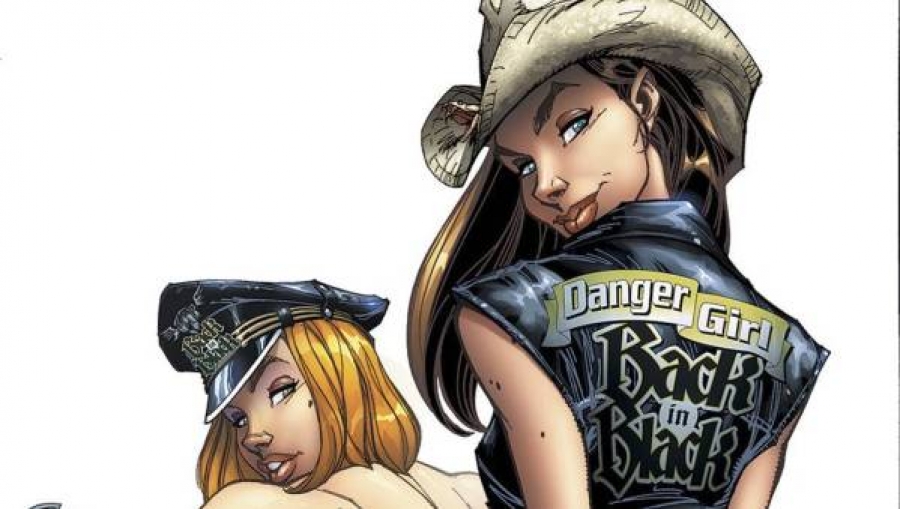Danger Girl: Back in Black tells the story of two Danger Girl agents, Abbey Chase and Sydney Savage, who embark on a cross-country mission to recover a stolen Native American artifact. Along the way, they encounter cryptic fortunes, barroom brawls, and super thieves with precision gadgets. The book has several notable action sequences and a number of imaginative panel-to-panel transitions; however, the artists’ decision to draw Abbey and Sydney in a highly sexualized style is a continual detraction from the rest of the work, and the entire document suffers as a result.
To be clear, Danger Girl: Back in Black has a bright and vibrant style that is appealing enough. For example, most moments convey a solid depth of field, and often such spaces are filled to their frames with jumping, leaping, falling, or exploding heroes and villains. Moreover, the work is extremely colorful, with enough shadows and hard lines to make every item feel well defined, if not solid. It is also the case that Back in Black contains a number of distinct characters with clear motivations who act in ways that generally matter.
However, it is also the case that all of these tools work in the service of a story that is not very exciting. The problems start at the level of the writing. This is one of those stories where characters use first names as a standard part of discourse. Abbey is continually called Abbey by virtually everyone she interacts with, and the same is true for many of the other characters. It’s a poor choice, as it makes the characters who are supposed to already be good friends come across as simpleminded, and that’s a problem in a tale where the majority of the women have physics-defying bodies and enormous, empty eyes.
Discourse-related issues persist throughout. Characters rarely have a chance to deliver one or sometimes two complete sentences before the reader is transitioned into a dramatic new perspective, which often involves a similarly terse report from some other character. This style would be totally appropriate if the dialogue felt compelling or meaningful, but, more often than not, it does not, functioning as little more than a placeholder to arrest the reader’s attention for no real purpose.
However, while the story itself is not one of the book’s stronger features, the action sequences are certainly accomplished, and they are extremely effective in drawing the reader’s eye across one and sometimes many pages in a single energizing sweep. The perspective is cinematic, and as a whole the book conveys a constant sense of motion that will take you from start to finish in one enjoyable ride. Moreover, it should be noted that the trans-American adventure tale does not get nearly as much play in mainstream comics today as it did in the 1980s and ’90s, and it is nice to see the artists working against this now-too-often ignored backdrop. I just wish they gave us better traveling companions.

